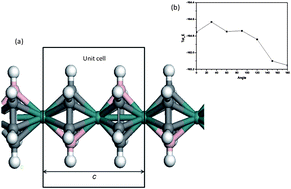Boratabenzene-vanadium sandwich molecular wire and its properties†
Abstract
Different from all reported sandwich molecular wires (SMWs), a novel class of SMW including vanadium boratabenzene (HBBz) clusters and their related one-dimensional (1D) SMWs are explored by using a density functional theory approach. The uniqueness of this class of SMWs lies in the boron heterocycles, where they possess a reactive functional atom. These features may overcome the limitation of existing SMWs which are inert and are difficult to be absorbed stably on surfaces. Theoretical calculations of the novel vanadium boratabenzene clusters indicated that they are energetically stable, with the rings having a restricted degree of rotation. In addition, its metallic 1D analog shows great promise in the applications of molecular electronics and spintronics.


 Please wait while we load your content...
Please wait while we load your content...